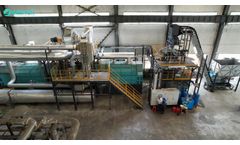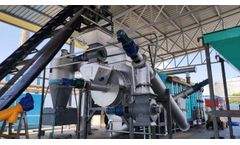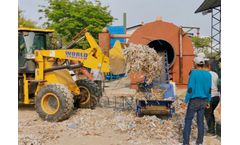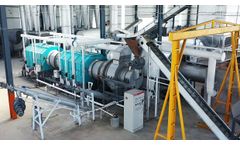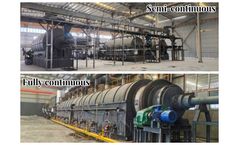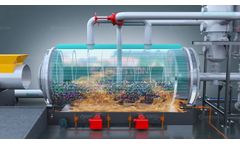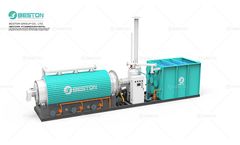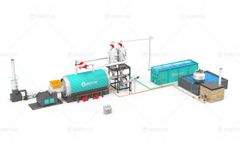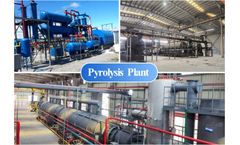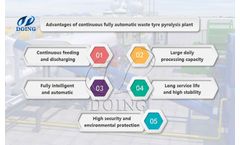Pyrolysis Reactor Articles & Analysis
155 articles found
However, one crucial factor that significantly affects the efficiency and quality of the pyrolysis process is the moisture content of the raw material. Why Does Moisture Content Matter in Oil Sludge Pyrolysis? ...
Central to its efficiency and output quality is the pyrolysis reactor—where thermal decomposition of organic materials occurs in the absence of oxygen. Innovations in reactor design are reshaping the performance, scalability, and environmental footprint of modern pyrolysis plants. ...
Central to this evolution is the refinement of continuous pyrolysis plant design, which now integrates cutting-edge reactor engineering to enhance thermal performance, throughput, and system longevity. Evolution of Reactor Architecture Traditional batch-type pyrolysis systems operate with high thermal inefficiencies due to ...
In a biomass pyrolysis plant, feedstock such as wood chips, agricultural waste, forestry residues, or even municipal solid waste undergoes thermal decomposition at high temperatures (usually between 400°C and 800°C) inside a pyrolysis reactor. Biomass pyrolysis plants offer numerous environmental advantages that make them ...
Pyrolysis reactors play a crucial role in the conversion of waste materials into useful products, such as bio-oil, syngas, and char. ...
Once prepared, the shells are loaded into a pyrolysis reactor, where they are heated to temperatures ranging from 400°C to 800°C. ...
Feeding the Plastic into the pyrolysis vessel: Load the prepared plastic material into the pyrolysis reactor of the machine. Ensure the reactor is sealed properly to maintain the pyrolysis environment. 4. Pyrolysis Process: Initiate the pyrolysis process by heating the ...
Drying the biomass, either through natural or artificial methods, is often necessary before the material enters the reactor. 2. Feeding the Biomass into the Reactor Once prepared, the biomass is fed into the pyrolysis reactor. ...
Below is a comprehensive list of the equipment you will need to set up a continuous pyrolysis machine: 1. Pyrolysis Reactor The core component of a continuous pyrolysis machine: Material: Typically made of carbon steel or stainless steel, resistant to high temperatures and corrosive environments. ...
The thermal efficiency of a pyrolysis reactor is a critical factor in determining the overall performance, energy consumption, and economic feasibility of the pyrolysis process. ...
Phases of the Operating Cycle in a Continuous Pyrolysis PlantThe operating cycle of a continuous pyrolysis plant typically includes the following phases:Feedstock Loading and Pre-treatment: In a continuous pyrolysis system, raw materials such as waste tires, plastics, or biomass are fed into the reactor through a continuous ...
Sealing is a crucial factor in the overall performance and efficiency of a pyrolysis reactor. The technology behind pyrolysis revolves around the thermal decomposition of materials in the absence of oxygen. ...
When considering investment options for pyrolysis technology, opting for small-scale pyrolysis equipment can be a practical choice, especially if your business processes a limited amount of organic materials. ...
Key Components: Equipment Costs: The major component of the initial investment includes the cost of the pyrolysis reactor, feedstock preparation systems, condensers, and cooling systems. Mini pyrolysis plant cost differs, depending on the technology and features. ...
This article explores the mechanisms, benefits, and considerations of using plastic pyrolysis for alternative fuel production. Understanding Plastic Pyrolysis Plastic pyrolysis is a thermochemical process that decomposes plastic waste in the absence of oxygen to produce various valuable products, primarily liquid hydrocarbons, gaseous ...
This article outlines the types of raw materials suitable for pyrolysis and describes the general process flow of a waste pyrolysis machine. 1. ...
Proper maintenance of a pyrolysis reactor is critical to ensure its efficient operation, longevity, and safety. ...
Technological Advancements in Biomass Pyrolysis The efficiency and effectiveness of biomass pyrolysis have been enhanced through various technological advancements. These innovations have improved the scalability, economic viability, and environmental benefits of the process. Advanced Pyrolysis Reactors Modern biomass ...
Heating and Vaporization: The prepared feedstock is continuously fed into a continuous pyrolysis reactor, where it undergoes heating at elevated temperatures, typically ranging from 300°C to 600°C, in the absence of oxygen. ...
This method offers a sustainable alternative to straw burning, transforming waste into a valuable resource. The Pyrolysis Process The pyrolysis of straw involves several steps: Feedstock Collection and Preparation: Straw is collected from fields and may be dried to reduce moisture content, ensuring efficient pyrolysis. Pyrolysis ...


